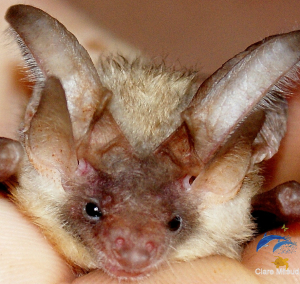Are Bats only useful to Halloween?
Characterised by long and curled ears, the Grey Long-Eared Bat (Plecotus austriacus) is one of the charming and useful bat species that are found in the Maltese Islands.
Bats are often thought of as being a nuisance, dangerous and scary animals. This has often been the result of Halloween characters, films and witch tales depicting bats as evil. Yet, very few people actually are given the opportunity to look closely at these creatures’ charismatic nature and their important role played in various habitats in our islands.
Bats, like all mammals have fur and suckle their young with mother’s milk but they are unique in having wings. Just like hedgehogs they lead a nocturnal life. Bats’ ability to fly makes them excellent predators of many nocturnal flying insects, which are often harmful or annoying to us humans. Bats are so successful at capturing and eating flying insects that they reduce and keep control of the insect pest populations in our environment. A lovely example is the statistic that reports one bat can eat between 600 and 1,000 mosquitoes and other insect pests in just one hour!
Recent local scientific studies by Clare Mifsud at the Conservation Biology Research Group of the University of Malta have used acoustics and field work to detect bat species and their distribution and has confirmed the presence of at least seven species of bats; most of these found in urban settings, while some others are less adapted to human settlements and live away from houses preferring crevices, underground structures and caves. Local bats feed on insects over agricultural land helping farmers to control insect pests. Others also eat insects next to buildings helping us to get rid of troublesome mosquitos and moths.
Ongoing conservation research and awareness to recognise the real contribution of these creatures is one of the projects assisted by the Biological Conservation Research Foundation (BICREF). BICREF volunteers assist such awareness work to promote accurate knowledge about these unique species and their habitats. Changes due to ongoing developments and vandalism against these creatures have an impact on the survival of these vulnerable species.
During this time of year we see many fake bats hanging around in shops and arcades, yet it is worthwhile knowing that bats are with us all year round doing their valuable job without bothering us. May Halloween allow us to think about these species positively and to support conservation research and awareness required by these often misunderstood creatures.
For further interesting: http://www.um.edu.mt/think/finding-bats-by-listening/


